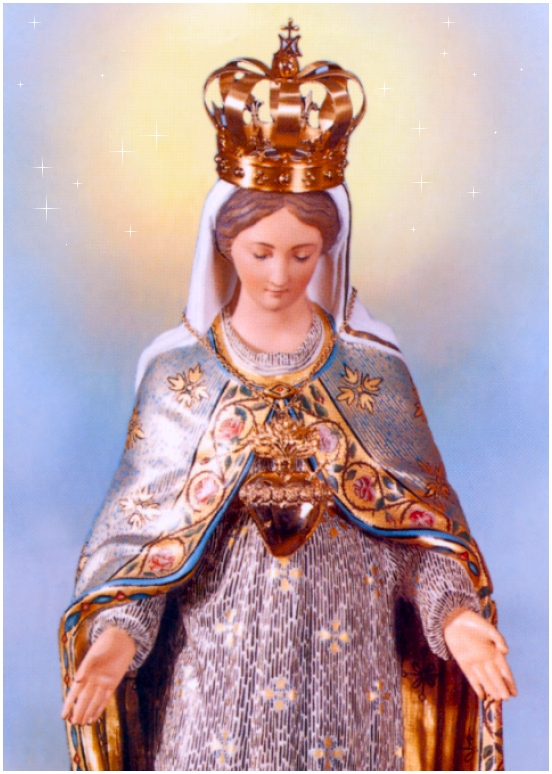


by Saint Louis de Montfort
MONTFORT PUBLICATIONS, New York
Nihil Obstat and Imprimatur, 1954

      |
TWENTY-FOURTH ROSE: MEANS OF PERFECTION THE SAINTS always made Our Lord's life the principal
object of
their study; they meditated on His virtues and sufferings and in this
way they arrived at Christian perfection. Once Saint Bernard began this meditation he always
continued
it. "At the very beginning of my conversion," he said, "I
made a
bouquet of myrrh made up of the sorrows of my Savior. I placed this
bouquet upon my heart, thinking of the stripes, the thorns and the
nails of His passion. I used all my mental strength to meditate on
these mysteries every day." This was a practice of the Holy Martyrs too; we know how
admirably they triumphed over the most cruel sufferings. Saint Bernard
says that the Martyrs' wonderful constancy could have only sprung from
one source: their constant meditation on the wounds of Jesus Christ.
The Martyrs were Christ's athletes, His champions; while their blood
gushed forth and their bodies were wracked with cruel torments, their
generous souls were hidden in the wounds of Our Lord. These wounds made
them invincible. During her whole life the Blessed Mother's chief concern
was
meditation on the virtues and sufferings of her Son. When she heard the
Angels sing their hymns of joy at His birth and when she saw the
shepherds adore Him in the stable, her heart and mind were filled with
wonder and she meditated upon all these marvels. She compared the greatness of the Word Incarnate to His
deep
humility and the way He lowered Himself; she thought of Him in His
manger filled with straw and then on His Throne in Heaven and in the
bosom of His Eternal Father. She compared the might of God to the
weakness of a Baby----and His wisdom to His simplicity. One day Our Lady said to Saint Bridget: "Whenever I
meditated
on the beauty, modesty and wisdom of my Son, my heart was filled with
joy: and whenever I thought of His hands and feet which would be
pierced with cruel nails, I wept bitterly and my heart was rent with
sorrow and pain." After Our Lord's ascension Our Blessed Lady spent the
rest of
her life in visiting the places that had been hallowed by His presence
and sufferings. When she was in those places she used to meditate upon
His boundless love and upon His terrible passion. Saint Mary Magdalene did nothing other than religious
exercises of this kind during the last thirty years of her life when
she lived in the prayerful seclusion of Sainte Baume. [1]
Saint Jerome says that devotion to the Holy Places was
widespread among the faithful in the early centuries of the Church.
They came to the Holy Land from all corners of Christendom so as to
impress a great love and remembrance of their Savior more deeply upon
their hearts by seeing the places and things He had made holy by His
birth, by His work, by His sufferings and by His death. All Christians [Note] have but one
Faith
and adore one and the same God, all hoping for the same happiness in
Heaven. They have one Mediator Who is Jesus Christ and therefore they
must all imitate their Divine Model and in order to do this they must
meditate on the mysteries of His life, His virtues and of His glory. 1. Saint Mary Magdalene, according to a
tradition, spent the last thirty years of her life in Provence, at a
place subsequently called Sainte Baume ("the Holy Ointment"). Pilgrims
go to the Dominican Church of Sainte Baume to venerate the relic of her
head which is preserved there. (Catholic Encyclopaedia.) M.B. Note: The author means Catholics; at the time he wrote this work, the seventeeth century, Protestantism had erupted, but long had been the habit of referring to Christians meaning Catholics, since until the revolt the only people calling themselves Christians were Catholics; he most certainly did not mean to imply that Protestants have exactly the same Faith as Catholics----the Web Master. HOME-------CLASSICS--------MARY |
      |
